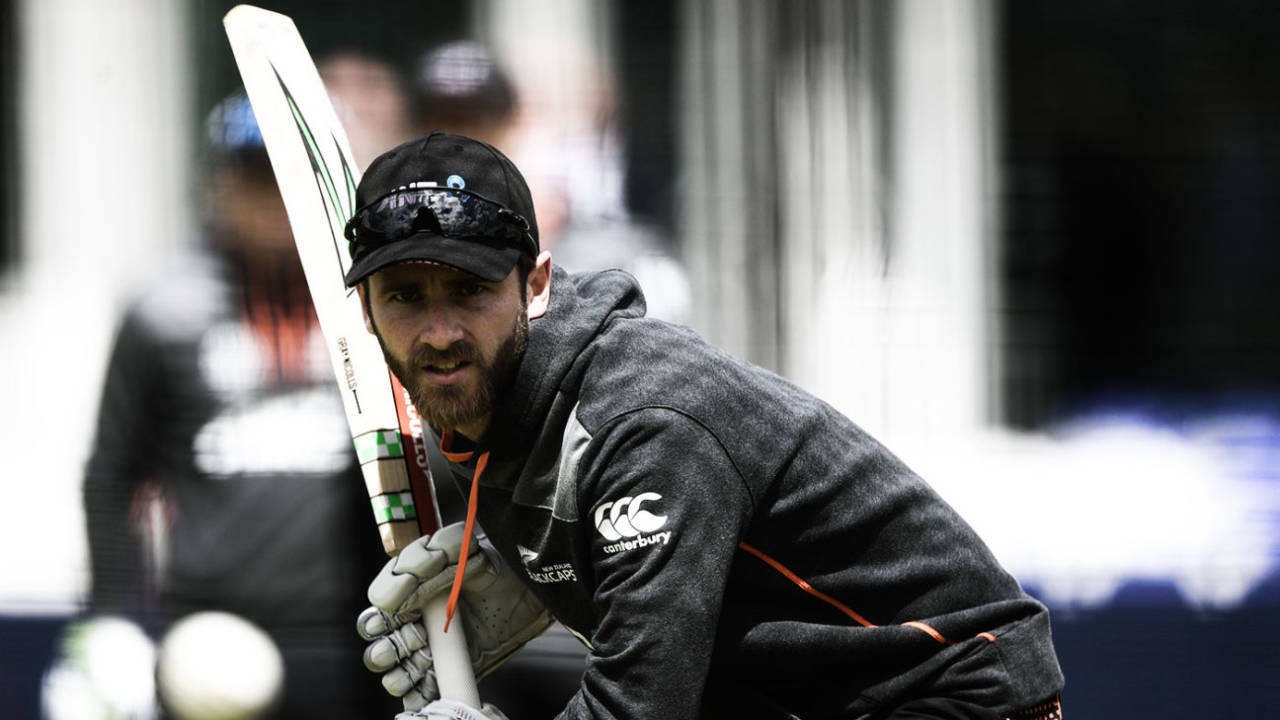Four New Zealand players India need to beware of and how they should go about dealing with them
Kane Williamson
One of international cricket's Fab Four batsmen, Williamson is arguably New Zealand's best player against spin, so it is important to attack him with pace to begin with. He has a tendency to open the face of his bat and collect singles through the third-man region, and that leads to dismissals from time to time. A good strategy against him would be to bowl a fifth- or sixth-stump line, pitching the ball six to eight metres from the stumps, with a floating slip and gully in place, because when you cut down that single-taking option, he will be forced to play differently.
Williamson keeps his hands apart on the bat handle, which allows him to manoeuvre the ball into gaps with the help of his bottom hand, quite similar to how hockey players use the bottom hand. His other preferred area for singles is midwicket, so along with the fielder at gully, it's a good idea to have midwicket in a catching position.
Spinners won't find it easy to tie him down for long, but early on, it's a good plan to bowl full and slightly wide to him. He likes driving but the split hands on the bat ensure that the bottom hands plays a slightly more important role than it should while driving off the front foot.
Ross Taylor
Taylor's success over the last 18 months has been one of the major reasons for New Zealand doing exceedingly well in this period.
He started as someone who preferred hitting to the on side, to the point of consistently dragging balls from outside off to leg. He has changed tack in the last couple of years and started collecting runs through the off side as well. A majority of his runs against pace through the off side have come through the cut shot.
He has a very short forward press against pace and prefers to stay beside the ball for everything that pitches around off stump. His preference for the short and wide ball means that the ideal deliveries to him are full and incoming. Also, it won't be a bad idea to strengthen the point region, having two fielders there, instead of just the standard one. That way the one stationed finer could also work as a catching position for a cut not hit along the ground.
Against spin, he likes to cut and sweep. His tendency to cut even balls that are too full and close often leads to him losing his wicket. Pitch it full to him, but not full enough to be driven. Bowled or caught behind against spin are two key modes of dismissal against him. And for his sweep shot, it's worth keeping the deep square-leg fielder towards midwicket.
Trent Boult
We saw the damage Boult is capable of inflicting during the World Cup warm-up game against India. With so much rain around this week, it is possible the pitch in Nottingham will have a little more for fast bowlers than it generally offers. If so, Boult will be a serious threat because of his ability to bring the ball back into the right-hand batsmen. He trapped Rohit Sharma leg-before in the warm-up game and will try to set up that dismissal once again.
Boult is capable of bowling a little more roundarm whenever he needs to extract more swing and I won't be surprised if he does that against the two right-hand Indian openers. Against Virat Kohli, he will look to pitch it wider, with a gully and slip in place.
Once the ball gets old, Boult rolls his fingers over it while bowling a slightly back-of-length delivery to get nicks to the keeper. If he doesn't get the desired swing with the new ball, he might even try that in his first spell.
Matt Henry
The tall right-arm fast bowler has caught everyone's eye in English conditions. He has a nice high-arm action, which, along with his height, allows him to extract extra bounce. His stock delivery lands in the six-eight-metre mark and goes over the stumps; not a lot of his deliveries in the first Powerplay go on to hit the stumps. While he uses that length to push the batsman back, his wicket-taking balls are pitched a little fuller, to induce edges. That's what the Indian top order should be careful of.
Interestingly, Henry bowls a different line in the death overs - wide and full, with a lot of changes of pace. He will either try to bowl wide yorkers or vary the pace of deliveries that finish outside off. When facing Henry at the death, the likes of Hardik Pandya and MS Dhoni should target the cover-point region as opposed to adopting the conventional death-overs tactic of hitting through leg side.
Aakash Chopra is the author of three books, the latest of which is The Insider: Decoding the craft of cricket. @cricketaakash
